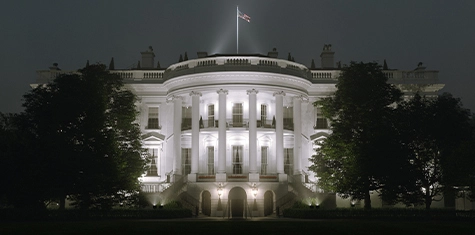On April 2, 2025, President Donald Trump announced a wide-ranging program of tariffs on imported goods from around the world. In announcing the new tariffs, President Trump stated that the tariffs are needed to redress large and persistent annual U.S. goods trade deficits, which he argues result from disparate tariff rates and non-tariff barriers that make it harder for U.S. manufacturers to sell their products in foreign markets. The program of tariffs imposes a 10% tariff on all countries effective April 5, 2025. For those countries with which the United States has the largest trade deficits, and subject to the exceptions described below, higher country-specific rates of duty will go into effect April 9, 2025.
The tariffs do not apply to the following items:
- Articles subject to 50 USC 1702(b), including certain personal communications, donations, information and informational materials, or transactions ordinarily incident to travel to or from any country for personal use.
- Automobiles and certain automobile parts (engines and engine parts, transmissions and powertrain parts, and electrical components) subject to Proclamation 10908 of March 26, 2025 (i.e., 25% tariff).
- Certain steel/aluminum articles and autos/auto parts already subject to Section 232 tariffs (i.e., 25%).
- A long list of products listed in Annex II to the executive order, including copper, pharmaceuticals, semiconductors, lumber articles, certain critical minerals, and energy and energy products.
- All articles that may become subject to future Section 232 tariffs.
The rates of duty established in the new executive order do not apply to products from Mexico and Canada (which are the subject of previous presidential orders described below). The new tariffs also only apply to the non-U.S. content of an item, provided that at least 20% of the value of the item is U.S. originating.
Although the tariffs affect the import of products from around the world, the Midwest United States’ largest sources of imports come from Canada, China and Mexico.
Canadian and Mexican Imports
The previously issued fentanyl/migration International Emergency Economic Powers Act (IEEPA) tariffs are unaffected by the just announced Reciprocal Tariffs. The tariffs under the previously issued IEEPA tariffs are as follows:
- United States-Mexico-Canada Agreement (USMCA) compliant goods are subject to a 0% tariff.
- Non-USMCA compliant goods are subject to a 25% tariff.
- Non-USMCA compliant energy and potash are subject to a 10% tariff.
In the event the existing IEEPA orders are terminated, USMCA compliant goods would continue to receive preferential treatment, while non-USMCA compliant goods would be subject to a 12% reciprocal tariff.
Chinese Imports
- Chinese products are subject to a reciprocal adjusted tariff of 34% according to Annex I to the April 2, 2025, Executive Order effective April 9, 2025.
- Previously, de minimis imports of Chinese goods valued at or under $800 were eligible for duty-free treatment. Starting May 2, 2025, these goods are no longer entitled to duty-free treatment and are subject to tariffs.
We also note that the Fact Sheet accompanying the April 2, 2025, Executive Order provides that the President may increase a tariff if trading partners retaliate or decrease a tariff if trading partners “take significant steps to remedy non-reciprocal trade arrangements and align with the United States on economic and national security matters.”
It is expected that retaliations will be modest and manageable if U.S. tariffs remain at 10%, similar to Canada’s latest response, imposing select 10% tariffs on specific U.S. goods.
The April 2 executive order contains numerous requirements, qualifications and exceptions. There are multiple cross-references to the many executive orders that were previously issued, which can significantly affect the applicable tariff rate.
It is important to carefully consider the timing of importation, the categories into which individual products may be classified (which often may be unclear) and especially the requirements to comply with USMCA rules, and to anticipate potential challenges to classification interpretations that may be taken by U.S. Customs representatives. We are assisting our clients in analyzing the applicability of the tariffs to their particular situation and helping them prepare for first- and second-order effects of the announcement, including recently announced or potential retaliatory tariffs, increased regulatory, tax and non-tariff barriers and scrutiny on U.S. companies, as well as possible boycotts of American brands.
For more information, contact Michael Meagher, Robert Oberlies or Jackson Guo.






